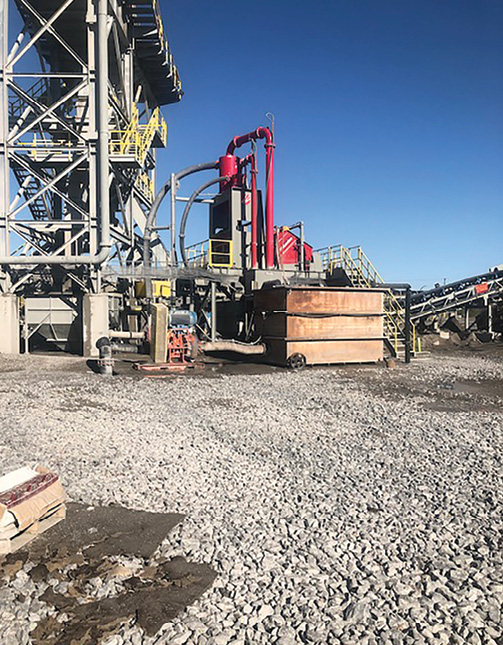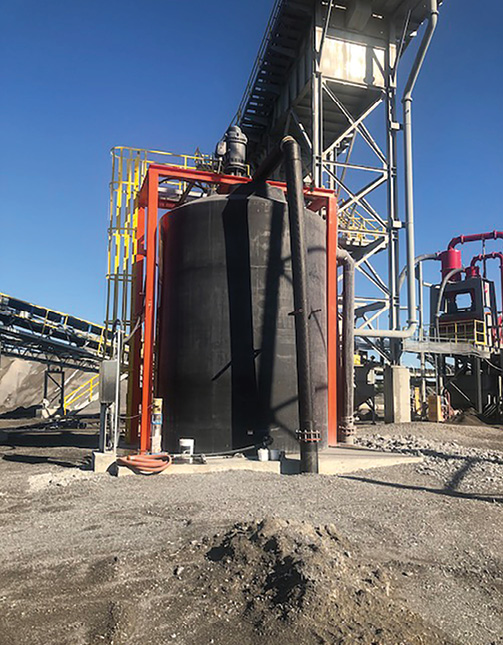Mines have great opportunity to use innovative water management designed to meet the needs of specific applications – reducing operating costs while improving performance, safety, and the environmental impact of both a mine and its processing plant.
By Ken Albaugh

The mining industry faces escalating demand for raw materials to power new technologies. When coupled with the pressing issues of cost increases and intensifying water scarcity, operators are under pressure to balance local water concerns, comply with environmental regulations, and mitigate operational risks.
According to a survey earlier this year by the professional services firm EY, mining executives feel increased scrutiny from stakeholder groups, particularly around environmental, social, and governance (ESG) issues. The same survey ranked water stewardship among the top three ESG factors under the microscope.[i]
While mining challenges are varied, water doesn’t have to be one of them. Innovative operators know strategically integrating intelligent water management solutions can significantly reduce production downtime and operating costs. These solutions also enhance safety and a mine’s environmental impact.
A holistic approach to water processes onsite can successfully balance production efficiency, reliability and sustainability. By combining the right equipment in the correct configuration with digital technology, operators can create more resilient, sustainable water systems that drive their business goals.
Compliance, today and tomorrow
At Xylem, we often repeat the mantra: “Our mission: Your mine.” This is not just another slogan; it dictates our approach by emphasizing the problem we are trying to solve rather than jumping straight to the solution. In practice, this means partnering closely with mining companies to understand their challenges and then tapping into our broad portfolio and expertise to deal with their individual needs.
Often, the first step is addressing compliance concerns for today and tomorrow. Mines are under more pressure than ever to reduce their impact on the planet, which means new and constantly evolving regulations that can differ depending on location.
This requires rethinking water use. Mines can meet regulatory and social responsibilities efficiently by tracking water quality and flow in real time and using right-sized systems to manage water.
We can learn from companies taking a strategic view of water to turn systemic challenges into competitive opportunities.
Take the example of one operator in Perú that needed to dewater its large open pit mine operation, which reached 1,200 ft (365 m) below the surface. An expected excess of water during rainy summer months threatened production. Routing electrical power became more complex the deeper they dug, putting security and safety concerns front and center.
The answer lay in Godwin surface-mounted diesel-driven pumps controlled by a remote monitoring system. This eliminated the need for power cables running down into the mine. The custom-designed system could remotely start and stop the pumps, monitor capacity and fuel levels, and communicate operating parameters, keeping mine operators safer and able to use their time more efficiently.
Xylem worked with the mine to ensure it had more than just the tools it needed to stay compliant with environmental regulations. Our team designed a system that saves money and improves safety by eliminating labor associated with switching pumps or running electrical power down into the mine.


Unique problems, bespoke solutions
With multiple factors at play, such as the type of mine, geography, and local context, every operation has unique water problems to solve. These problems also evolve as mines expand and production ramps up.
The common denominator is the opportunity to use innovative water management designed to meet the needs of specific applications — reducing operating costs while improving performance, safety, and the environmental impact of both a mine and its processing plant.
Take one of the largest U.S. producers of construction aggregates, who decided to relocate its on-site processing plant to increase production capacity. With the new location further away from the plant’s water supply, the company needed an integrated water management system that could handle all the necessary applications, including washdown, dust control, truck wash, pugmill, and slurry, across a greater distance.
After an extensive site audit, engineers developed a plan to improve operational efficiency, increase the required water supply, and ensure compliance. To support the demands of the new processing plant and to ensure future capacity, Xylem engineered and installed an integrated system of new pumps, piping, and fittings.
A Goulds Water Technology vertical turbine, powered by a 250-horsepower motor and providing 3,500 gallons per minute of water, was deployed on a custom stand designed to sit above the high-density polyethylene (HDPE) water tank, eliminating the need for a pond and saving valuable space on site. The operator also used a Goulds Water Technology e-SV 5-stage stainless steel multistage pump to provide water to the 200 trees planted to create a sustainable barrier between the road and plant, complementing the local environment.
Overall, the efficient and reliable turnkey water management system enabled the plant to process 15% more aggregate. It also connects to the plant-wide SCADA system so a single person can monitor and control it to ensure minimal downtime and maximum efficiency.
Water doesn’t have to be a burden as environmental regulations become increasingly stringent. By taking a holistic approach and leveraging advanced water technologies, the mining sector can navigate the complexities of environmental laws and deliver better business outcomes.
[i] EY. Top 10 Business Risks and Opportunities for Mining and Metals in 2024.
About the author: Ken Albaugh is director of sales and services at Xylem. With more than three decades of engineering experience in process, facility, system, mining, and pumping design, Albaugh is a MSHA-trained and certified miner who has spent the last 25 years leading major mine dewatering projects for a wide range of mining customers and contractors.
